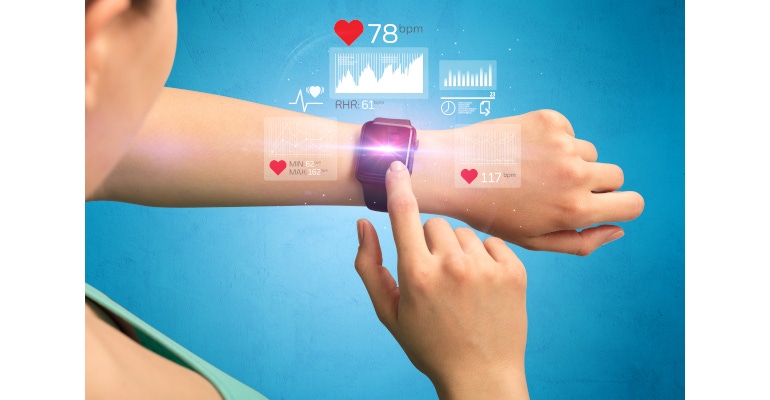
Piloted by the promise of proactive and preventive healthcare, the potential for massive savings for consumers, and the increasing requirements for remote monitoring and health management, the total installed base of medical wearables is prolifically growing, expected to surpass 120 million devices by 2023.
The global medical wearable market is expected to reach USD$19.5 billion by 2025 from USD 7.4 billion in 2020, at a high CAGR of 21.4% during the forecast period of 2020 to 2025, according to MarketsandMarkets. Of course, this promise and potential hinges upon the reliability of these connected devices in harsh environments, including the human body, where salt, perspiration, cleaning fluids, ionized water, humidity, pollution, and other corrosives and contaminants can negatively affect the functionality, reliability, and operation of medical wearable devices. Stakeholders, such as medical device manufacturers (MDMs) and their designers and engineers, are overcoming reliability challenges by adopting thin-film protective nanocoatings to protect wearables from these threats. In turn, they are enjoying the benefits of reduced recalls and repairs with increased sales and improved reputations from producing reliable products their customers can depend on.
Medical Wearables
Medical wearables are defined as non-invasive, autonomous devices that perform either a specific supporting or monitoring function for a prolonged period. These smart devices harness the synergy between multiple science domains such as nanotechnologies, biomedical technologies, electronic engineering, materials engineering, and electronic engineering.
Wearables Primer
Medical wearables comprise many devices, including fitness trackers, smart health watches, wearable ECG monitors, wearable blood pressure monitors, and biosensors. Connected medical wearables obtain and transmit data such as ECG, heart rate, blood pressure, respiration rate, blood oxygen saturation, blood glucose, skin perspiration, body temperature, and motion evaluation.
Medical Wearable Components
Hardware used in medical wearables includes various sensors that collect and transmit health data: accelerometers, gyroscopes, compasses, motion trackers, GPS components, barometric altimeters, optical heart rate monitors, ECG sensors, skin temperature, and galvanic skin response sensors, bioimpedance sensors, ambient light sensors, and various LED sensors. To ensure reliable functionality, medical wearable components all have similar requisites: long-term stability and resiliency.
Benefits
With these technologies' intersection, myriad benefits present to consumers, healthcare providers, and insurance companies. Wearable technology incentivizes patients to reclaim their health – 75% of users agree that wearables foster healthy behavior. Increased usage means increased medical data. According to Statista, there could be as much as 2,314 exabytes of new medical data generated by the end of 2020. Wearables also can reduce healthcare staff workload. One study demonstrated that device use registered an 89% reduction in preventable cardiac or respiratory arrest. Insurance companies stand to benefit, as well. In 2016, 42% of providers reported extensive medical cost savings due to the Internet of Health Things (IoHT) solutions such as wearables.
Challenges for Medical Wearables
Although medical wearables support specific and varied functions, all such devices have three main design requirements: comfort and ergonomics, security, and reliability. Out of the three, attaining reliability is the most important and formidable challenge for medical device manufacturers. And clearly, consumers must find it easy to adopt the technology. Device designers must eliminate inconveniences, such as the need to remove the wearable before stepping into the shower, for this to happen. Finally, devices must convince the healthcare community at large that the data is accurate. Suppose a wearable device is prone to instant failure due to a short circuit of a sensor or unexpected shut down due to corrosion. In that case, healthcare providers may be less confident about the product's overall ability to give reliable data.
Reliability: Significant Challenges for Traditional Protection
A medical wearable system and its parts go where consumers go. As such, components will face exposure to bodily fluids such as sweat and blood, ionized water, humidity, temperature extremes, and countless other corrosives and contaminants. If one component becomes corroded and fails, the entire system can go down, resulting in loss of data, liability, recalls, repairs, and reputation loss. For fail-proof network coverage, these parts need to be protected.
To protect medical wearables from hostile environments, MDMs have traditionally employed enclosures and gaskets. These mechanisms form hermetic seals intending to keep contaminants out. However, not only can they become dislodged in a variety of scenarios, corrosives and particles still can make their way in, becoming trapped inside and breaking down components until they fail.
Protective Nanocoatings – Setting the Standard
Some MDMs set their own standard of excellence that differentiates their products in a crowded marketplace, effectively preventing liability, lost revenue to repairs and recalls, and losing reputation. They are safeguarding their devices with protective nanocoatings, a better way to assure users that their medical wearables are dependable, gaining their assurance, compliance, and trust more and more as they see their devices deliver daily.
General Benefits of Protective Nanocoatings
Protective nanocoatings extend the useful life of medical wearables with consistent, repeatable protection. They can be functionalized to enhance device performance, modifying the substrate's surface with beneficial mechanical, thermal, or electrical qualities to offer more reliability and convenience. And medical wearables protected with nanocoatings are easy to clean, disinfect, and sterilize, preserving the wearable in any environment inside or out of the human body.
Plasma-based nanocoatings are functionalized films, some of which are hydrophobic (repelling water and other liquids). They work with the same approach as conformal coatings, which cover electronic components inside devices, protecting them from the inside out. Unlike traditional conformal coatings, however, nanocoatings can be specifically engineered to maintain long-lasting protection for various threats at nanoscale thickness. These coatings are meeting and exceeding IP standards for medical wearables, providing life-proof protection.
Overcoming Medical Challenges
Aside from redefining reliability, protective nanocoatings help MDMs overcome common challenges:
Protective nanocoatings are thinner than a strand of human hair, minimizing weight and bulk, enhancing comfort and ergonomics.
Nanocoated medical wearables provide the necessary reliability that exceeds market requirements by surpassing any IP rating.
Inconveniences such as removing a wearable before going into water are no longer an issue, encouraging consumer adoption.
Reliable devices and connectivity produce reliable data, leading to confidence in the healthcare community.
Medical device OEMs and their designers can surmount many reliability issues with protective nanocoatings, earning consumers, providers, and healthcare practitioners' trust. The medical wearable market is booming as more devices come online and are found in more diverse environments than ever before.
About the Author(s)
You May Also Like




